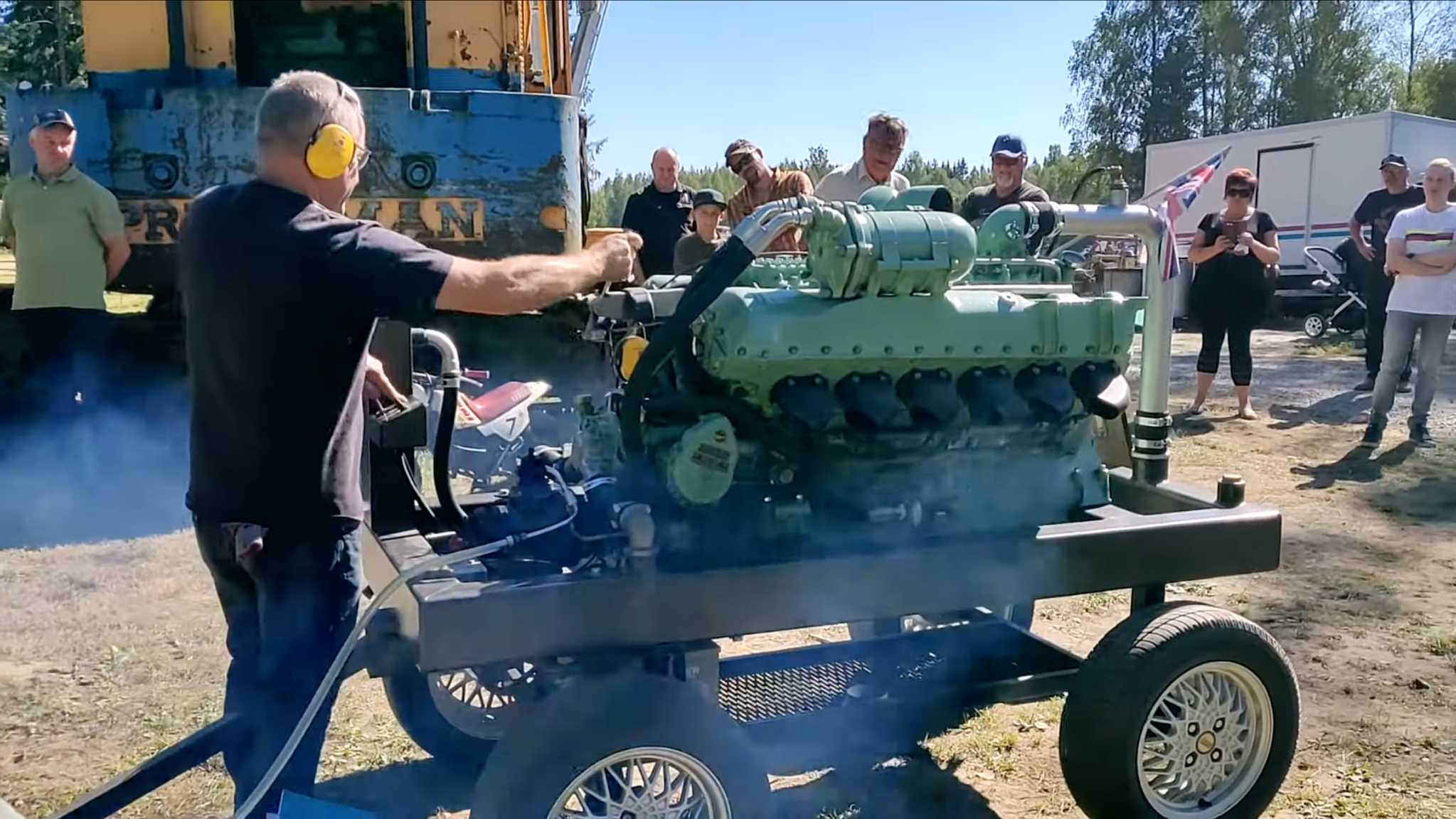

World War II was a time of serious technological development in many disciplines of engineering. While most aren’t exactly related to cars, the one that has always been fascinating is the rapid rate of research and development that occurred on the internal combustion engine. Everything was powered by old-fashioned pistons, explosions, and huge displacement. This Rolls-Royce Meteor V12 engine from a WWII tank is the thunder of that early innovation.

Though the video doesn’t offer much information about the engine other than it is indeed a Meteor and that there is a very happy man starting it up. But there is plenty of info online about the massive V12, and its story is much like most other huge displacement engines built for war: it has its roots in fighter aircraft.
It displaces a ridiculous 27 liters, makes around 600 horsepower, and twists up to 1,450 pound-feet of torque, all using an engine design that somewhat resembled the famous Rolls-Royce Merlin engine. The legend says that the idea behind the Meteor was the idea that a de-rated Merlin engine would do an excellent job at powering heavily armored vehicles. The Kestrel engine existed but did not make the required horsepower.

It’s also advanced for the time period. In 1941, the Meteor has overhead camshafts with 2 valves per cylinder, in a time when the ill-fated sleeve valve engine was tipped to be the future of internal combustion and where simple flathead engines were the norm. Pushrods provided most forms of valve locomotion. But the Meteor, and the Merlin, were ahead by decades.
This is why post-war race cars were usually built around former aircraft and tank engines. The rate of development was absurd, and racers suddenly had a much deeper toolbox to go racing with. Now, 600 horsepower can come from engines a fraction of the size. But if it weren’t for the early pioneers, we might have gotten there a lot later.
Got a tip? Email tips@thedrive.com